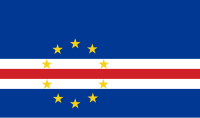
Photo from wikipedia
Biological collections, including herbarium specimens, are unique sources of biodiversity data presenting a window on the history of the development and accumulation of knowledge of a specific geographical region. Understanding… Click to show full abstract
Biological collections, including herbarium specimens, are unique sources of biodiversity data presenting a window on the history of the development and accumulation of knowledge of a specific geographical region. Understanding how the process of discovery impacts that knowledge is particularly important for oceanic islands which are often characterized by both high levels of endemic diversity and high proportions of threatened taxa. The archipelagos of the Macaronesian region (i.e. Azores, Canaries, Savages, Madeira, and Cabo Verde) have been the focus of attention for scientific expeditions since the end of the 17th century. However, there is no integrated study describing the historical process of collecting, discovery and description of its flora. Using as a case study the Cabo Verde endemic angiosperm flora, we review the history of collecting in the flora and apply a Bayesian approach to assess the accumulation of species discovery, through time and space across the nine islands of the archipelago. Our results highlight the central role not only of natural characteristics (e.g. area, age, maximum altitude and average value of the terrain ruggedness index) but also historical factors (i.e. the location of major harbors) for the development of knowledge of the flora. The main factors that have determined the process of species description in the archipelago and how this impact our understanding of diversity patterns across archipelagos are discussed.
Journal Title: Frontiers in Plant Science
Year Published: 2020
Link to full text (if available)
Share on Social Media: Sign Up to like & get
recommendations!